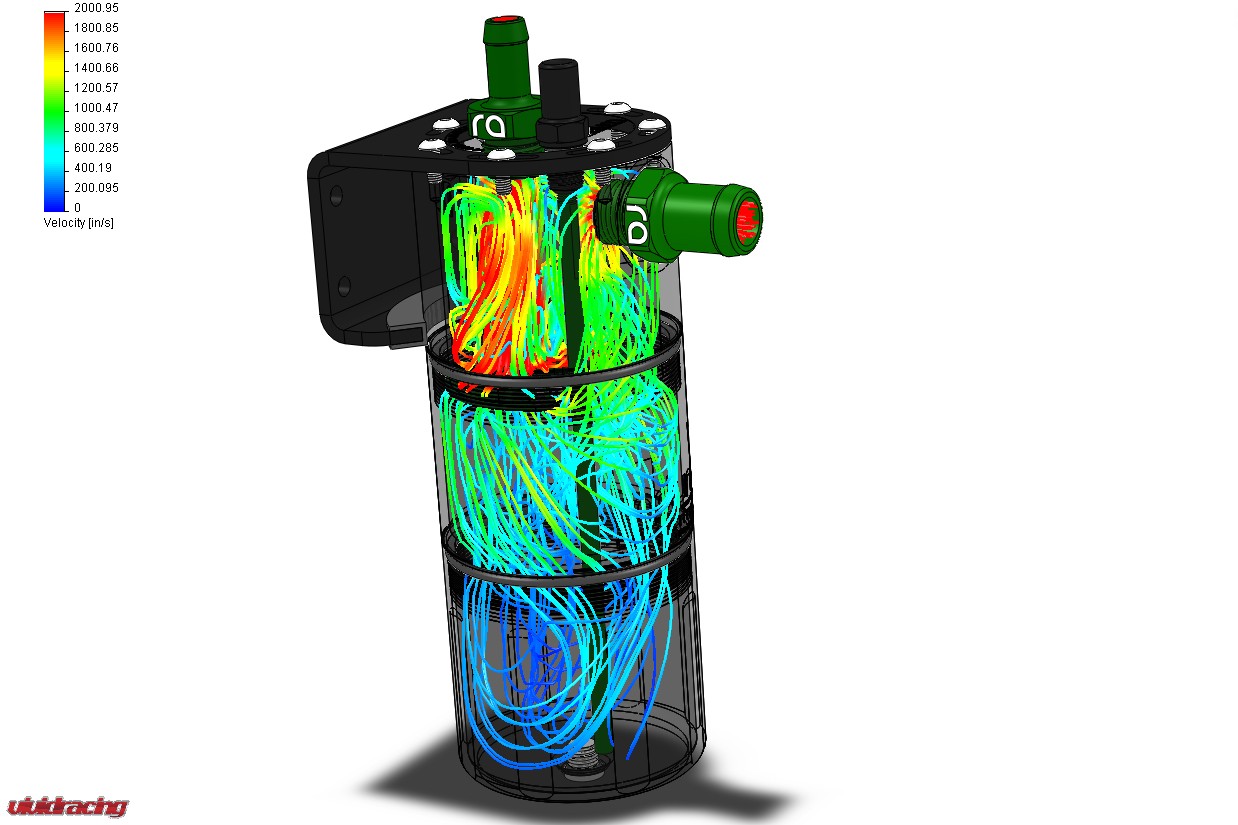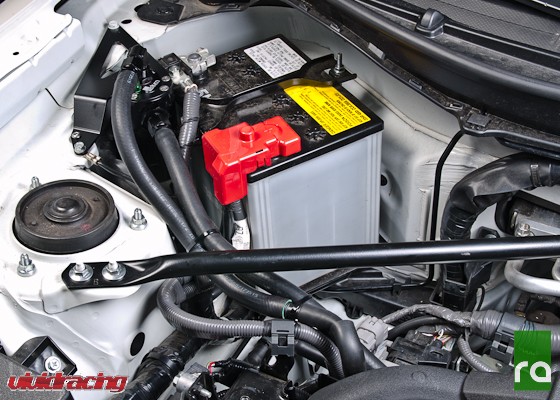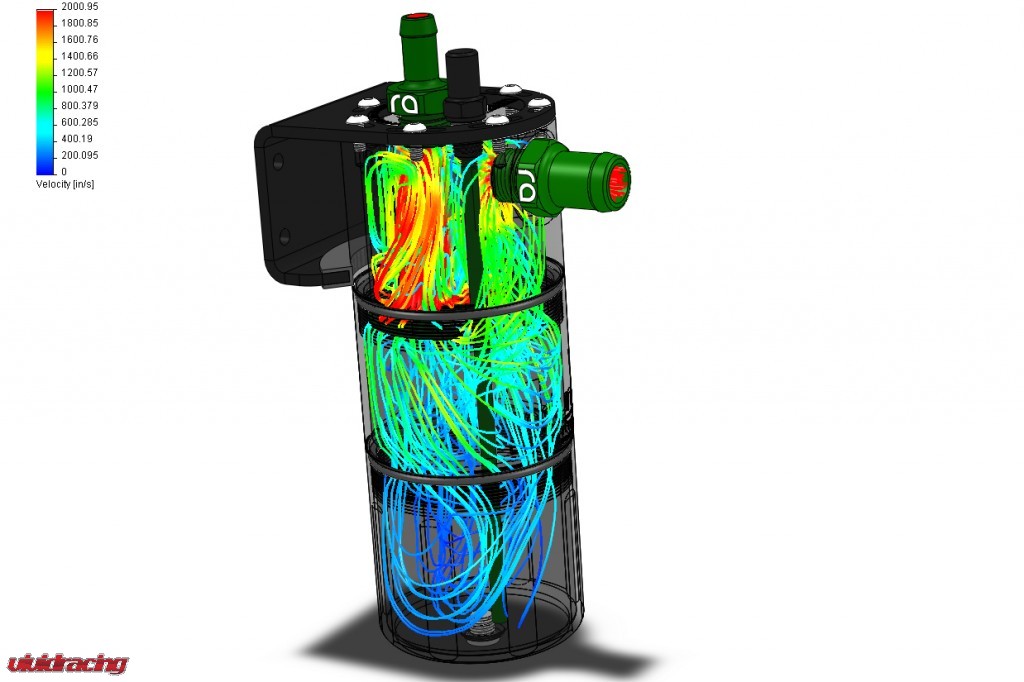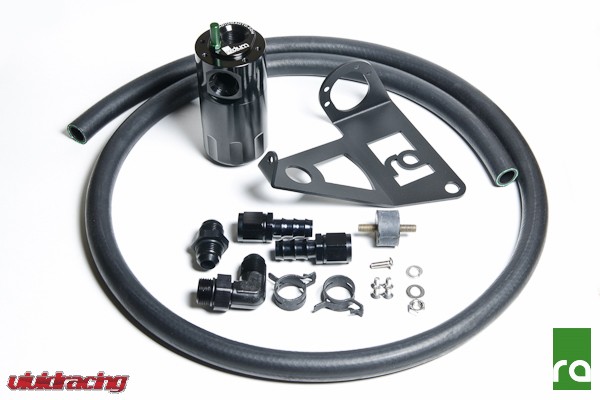To understand the necessity of a oil catch can you must first understand how they work.
When driving aggressively the PCV (Positive Crankcase Ventilation) system must regulate and remove fumes from the engine crankcase, and alleviate crankcase pressure. This is done by looping that unwanted pressure into the intake manifold, when this occurs “Blow-by” can cause oil mist and other products to settle along the engine intake and over time form a “gunk”. This build-up over time drastically degrades your performance and the efficiency, especially if your vehicle is turbo charged.
The purpose of a catch can is to collect what is being sent out through the (PCV) valve, and separate the oil from the vapors from being returned back into the intake manifold. Unlike many catch cans on the market, Radium Engineering’s catch cans feature an integrated oil separator that accelerates oil condensation. This cleans the PCV gasses and reduces the oil build-up on the inside of the intake tract and intake manifold and intercooler. The stainless steel filtration media is cleanable and re useable. The catch cans act as a filter and collect the oil and other sludge and keep it out of vital engine components. Radium Engineering catch cans do NOT vent to atmosphere (VTA), thus are emissions and track legal. Closed loop systems route clean filtered air back in through the engine to be burned and to promote negative crankcase pressure for optimal performance. Furthermore, closed systems prevent unwanted oil vapors into the cabin.
Radium Engineering makes an array of vehicle specific Oil Catch Cans as well as a universal Oil Catch Can kit.
Click here to shop Radium Engineering Oil Catch Cans






